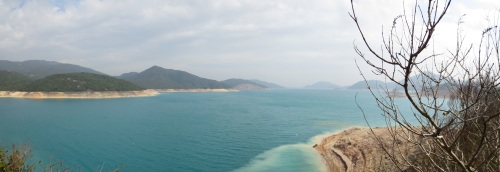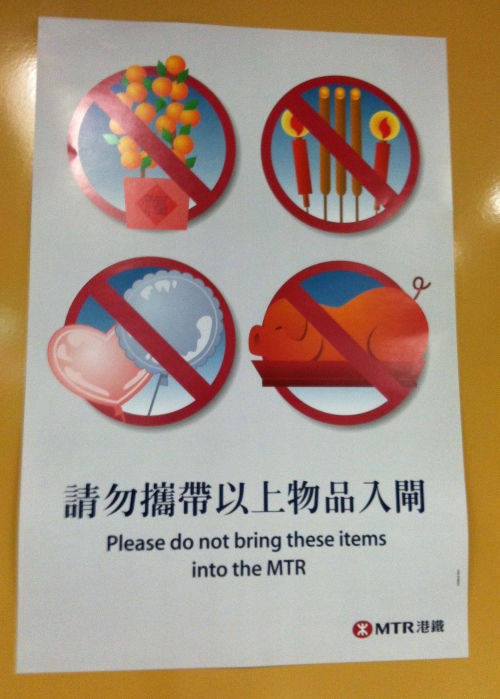Ever since we arrived in Hong Kong, we’ve been saying that we should do some hiking. Hiking in Hong Kong, you might ask? In one of the most densely populated cities in the world? Why yes, indeed. There’s lots of great hiking in HK because so much of the land here is undeveloped—it is a city of mountains, after all.
That means that the parts of HK that are built-up are really densely populated. In mid-2010, for example, the Kwun Tong area of Kowloon had a population density of 54,530 people per square kilometer, according to the HK government. (That’s 141,000 people per square mile. For the sake of comparison, the population density of Manhattan, the densest of the NYC boroughs, was just under 70,000/sq. mile according to the 2010 census.)
The New Territories, on the other hand, are almost fourteen times less densely populated than that. So there’s lots of beautiful open space for trekking.
One of the best, and best-known, trails is the MacLehose Trail. It covers 100km across the New Territories, broken up into 10 stages.
Cate and I recently hiked Stage 1, which loops for 10 km around the High Island Reservoir. (The reservoir is on the right side of the map above. Stage 1 starts on the northwestern side of it and loop around counterclockwise, ending almost due east of where it began.)
The reservoir is gigantic, and affords all kinds of gorgeous views. Getting to the trailhead is a bit of a project, as it involves a trip on the MTR, a minibus to Sai Kung, then a normal (i.e., double-decker) bus to the start of the trail. While waiting for the final bus, we got a sense of just how far we were from home when we saw this ad on the side of a bus, advising people what to do when encountering the feral cattle of Sai Kung. And yes, we did see one. Fortunately we had seen this PSA and thus knew what to do (namely, enjoy their presence).

We thought we were lucky to have with us a detailed guidebook about the MacLehose Trail, which included all kinds of photographic details meant to help reader find their way. Here, for instance, is the photo that shows how to get to the Stage 1 trailhead from the bus drop-off point.

Would you like to hear something hilarious? This photo is totally accurate, except that the starting point is actually ninety degrees in the opposite direction.

The original photo is 100% correct, assuming that the full caption is supposed to be “Here’s the starting point; now go the other way.”
Fortunately we didn’t go too far before encountering a posted map that made clear we’d gone the wrong way.
After retracing our steps, we were good to go.

The views are almost immediately spectacular. After about 10 minutes going the correct way, we found this. This is one of those fancy panoramic shots, so click on it to see it in its full glory. The water really is that color.

Since it’s a reservoir, there are occasional weird water-management thingies, like this recently landed spacecraft.

But the sights are mostly just gorgeous.

After stopping for a snack, some Rootin’ Tootin’ Four Seas Biscuit Sticks…

Hands in the air! You’re under arrest for impersonating a Nilla Wafer.
… we continued on.


The end of Stage 1 is near this interesting sculpture, a memorial to those who died during the construction of the reservoir. That’s the open Pacific Ocean in the background.

The sun was starting to set as we finished up. It’s still early February, so by 4:30 it was starting to get dark and chilly.

Sunset over the High Island Reservoir. It really is as isolated as it looks. When we were finished, we were lucky to share a cab back to Sai Kung with some HK natives who had the good sense to call for one. (And who had the ability to explain where we were.) Otherwise, we would have had to walk three hours back to where we started.
But we had just another kilometer to go, not only to officially finish Stage 1…

… but also to enjoy Long Ke beach down there on the left.

Three hundred stone stairs later, we were there. As you can see, we were practically alone.


































